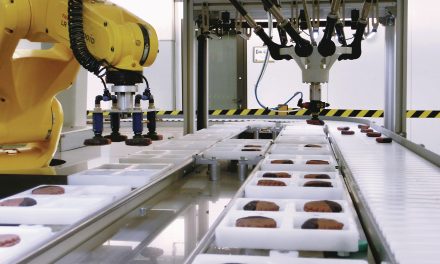 Here, Dr Andy Levers, technical director at the Virtual Engineering Centre (University of Liverpool) and technical lead for LCR 4.0, discusses how to overcome the barriers to Industry 4.0 success, and gives examples of SMEs that are excelling in the space.
Here, Dr Andy Levers, technical director at the Virtual Engineering Centre (University of Liverpool) and technical lead for LCR 4.0, discusses how to overcome the barriers to Industry 4.0 success, and gives examples of SMEs that are excelling in the space.
Industry 4.0, or the fourth industrial revolution (4IR), is the increasing convergence of digital and physical assets. From sensors, to the Industrial Internet of Things, virtual reality and simulation, 4IR is transforming modern manufacturing by enabling the generation and analysis of digital data that supports the development of smarter products, smarter processes and smarter supply chains.
Something that has been well documented on a global scale, it is creating unprecedented opportunities for UK manufacturing businesses and supply chains to optimise productivity and efficiency. However, while big international organisations like Siemens are embracing the benefits 4IR has to offer, the general view is that SMEs are still lagging behind.
Improved efficiency, stability and agility coupled with significant cost savings, increases in revenue and profits are just some of the benefits of adopting 4IR technologies. In what can also be referred to as a ‘smart factory’ we’re seeing more manufacturers moving towards connecting the physical with the digital, allowing them to communicate and cooperate with each other in real time to improve efficiency and ways of working.
As with any new technology, there is some reluctance to adopt from some industries, which is largely due to lack of experience and manpower to create and implement effective smart systems, in addition to issues around lack of investment.
The skills gap is a growing concern for many as the type of skills needed for smart factories are tough to source, yet in high demand. A recent poll of over 600 industry professionals found that 67% of UK manufacturers are worried about the future availability of skilled staff for their business, whilst 72% don’t believe the government is doing enough to promote skills training1 .
There are also security concerns to address, with manufacturing revealed as the second most hacked industry after healthcare in 20172, and 4IR connecting more IoT devices and processing huge amounts of data in the cloud.
However, the success stories are out there, especially in countries like Germany, France and China that are rolling this new way of working out across their industries. The U.S has been somewhat lagging behind in recent years, although there are some pushing the boundaries to make 4IR a reality. The city of Cincinnati, Ohio for example, has recently declared itself an ‘Industry 4.0 demonstration city’ to encourage investment and innovation in manufacturing.
Looking closer to home, there are projects like LCR 4.0 that are making a difference. The part ERDF funded project focuses on supporting SMEs in the manufacturing sector in adopting Industry 4.0 technologies including simulation, virtual prototyping, IP support, augmented operators, software development etc.
 Another example is the global innovation hub for sensor technology, Sensor City, which is making waves in the IoT and intelligent manufacturing space. The facility is open to start-ups, entrepreneurs and big business who want to access the sensor related skills, services and equipment that will enable them to leapfrog from idea to prototype.
Another example is the global innovation hub for sensor technology, Sensor City, which is making waves in the IoT and intelligent manufacturing space. The facility is open to start-ups, entrepreneurs and big business who want to access the sensor related skills, services and equipment that will enable them to leapfrog from idea to prototype.
Based at Sensor City, tech pioneer, Aqua Running, is an early adopter of 4IR technologies. The company is using IoT and sensor technology to transform the sports industry. Football clubs have become increasingly reliant on big data in recent years, deploying GPS-tracking to monitor performance in training and Aqua Running is now applying this technology to enhance its buoyancy suit that monitors training, exercise and rehabilitation in a swimming pool.
The security sector is also making use of Industry 4.0 technology, with biometric security firm, Human Recognition Systems (HRS), recently reducing component costs by 20%. By working smarter and replacing a hardware component in one of its leading products with a software module, HRS is estimated to save £130,000 across the next two years, while also preparing the company and its customers to protect against security breaches more effectively.
If UK plc is to reap the real benefits of 4IR in terms of productivity and competitiveness then increasing uptake among SMEs will be key. Unlocking this opportunity means offering SMEs hands-on support to ensure they understand what value it can add to the business before they look to adopt it.
While the benefits of Industry 4.0 are clear and the real-life examples are all around us, there are some obstacles we need to overcome before it becomes commonplace. More investment in both technology and skilled workers is required and SMEs should be encouraged to make the most of support on offer if we are to see smart manufacturing go further. By addressing these issues and embracing the technological advances available, it will be a very promising future for manufacturing.
For more information, visit lcr4.uk


